Mount BeautyAttractions & History
Located at the foot of Mount Bogong (Victoria’s highest mountain) is Mount Beauty and the township of Mount Beauty in the Kiewa Valley.
Being part of the Victorian Alpine Region, Mount Beauty is very popular during the winter season. It is also known as the place to stay in the non-winter periods from spring, summer and autumn. It is also close enough to other locations, that the decision is to what shall we explore, meaning you may have to keep coming back during your holidays, or maybe just take a year off and experience all the seasons in one hit.
For the newcomer planning a trip, your first port of call should be the Mount Beauty Visitor Information Centre. You of course can visit their website and email or ring them with any enquiries. The visitor centre also encompasses the Mount Beauty Museum with some fascinating in interpretive display by the Kiewa Valley Historical Society.
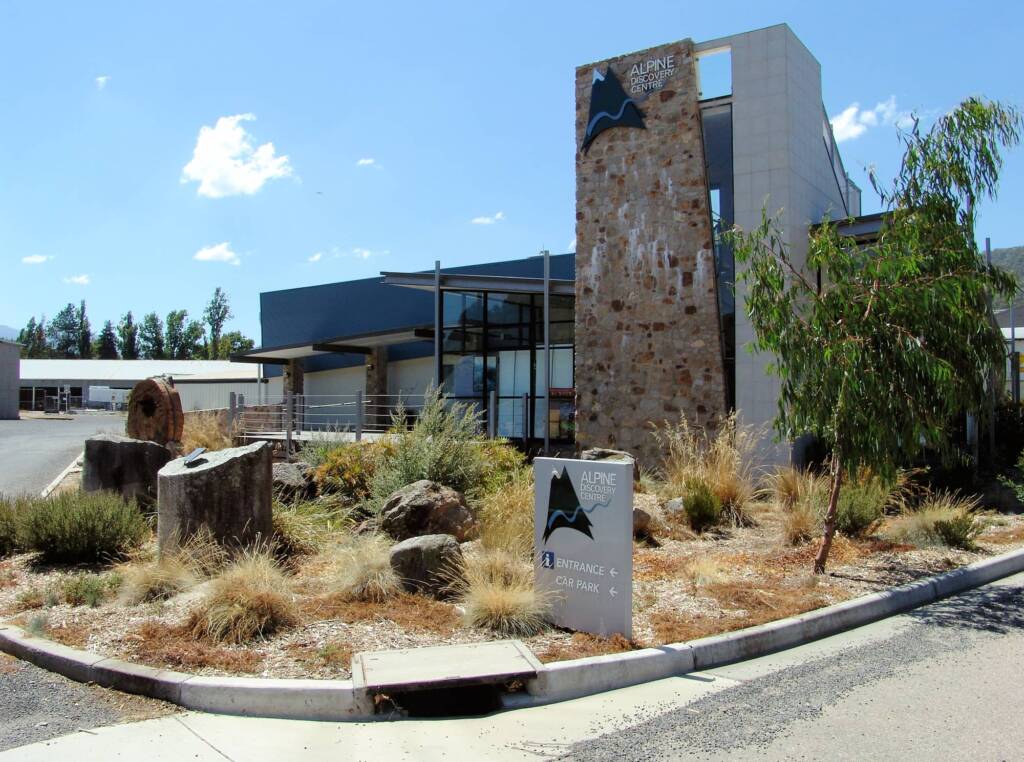
There are a number of great vantage points to take in and enjoy the view, as well as to photograph the spectacular landscape, including Sullivans Lookout and Big Hill Lookout (‘Big Hill’ is the hill south and behind Mount Beauty).
In the heart of the township is the Mount Beauty Pondage, that forms part of the Kiewa Hydro-electric Scheme used to regulate flows into the Kiewa River. A popular spot for locals, recreational fishing, boaters and just those enjoying the scenery.
History
The Kiewa Valley was first seen by Europeans when Hume and Hovell camped on the banks of the Kiewa River in 1824. Settlement began in 1835 and by about 1941 the Tawonga-Mount Beauty area had been taken up.
Prior to this the area was inhabited by the Ya-itma-thang tribe of Aborigines. They lived mainly along the rivers, and then in the summer would venture into the mountains to feast on the Bogong Moths.
The Bogong Moth (Agrotis infusa) begins life as caterpillars (also known as cutworms), feeding on the winter plains west of the Great Dividing Range (inland NSW and Queensland). The summer high temperatures make the plains unfavourable for the Bogongs, so the adult moths emerge in spring to begin their migration to the cooler high country of the Great Dividing Range (usually above 1,700 metres) where they congregate in caves around the area of Mount Bogong in the Bogong National Park.
Over the summer period (November to February), the adults remain congregated in the rock crevices in massive numbers, remaining dormant, whilst living off their fat reserves. The approach of winter, sees them migrate north to mate, lay their eggs, and then die, ending their annual cycle. The eggs then pupate in a cocoon in their burrow beneath the soil, with the adults emerging about four weeks later.
Mount Beauty was built by the government electricity utility (SEC) during the 1940’s and 1950’s to house construction workers on the Kiewa Hydro Electric Scheme. By 1957 construction of the scheme was virtually complete, and control of the township was transferred to Bright Council (now Alpine Shire), and houses became available for sale to the public. The Valley has since become a popular tourist centre, providing a unique place from which to visit the mountains and surrounding Alpine region.
Unfortunately we do not have any images of the Bogong Moth. Ausemade welcomes any contributions of the moths. Any images used will be attributed and copyright to the owner.
Conway Shovel
In the grounds of the visitor centre is the Conway Shovel. This machine was used for excavating tunnels during the construction of the Kiewa Hydro-Electric Scheme.
After the rock at the tunnel heading had been loosened by the use of explosives, this machine picked up the rock from the floor of the tunnel and loaded it into trucks for transport out of the tunnel.
The overall height of the machine has been reduced to a minimum for working underground.
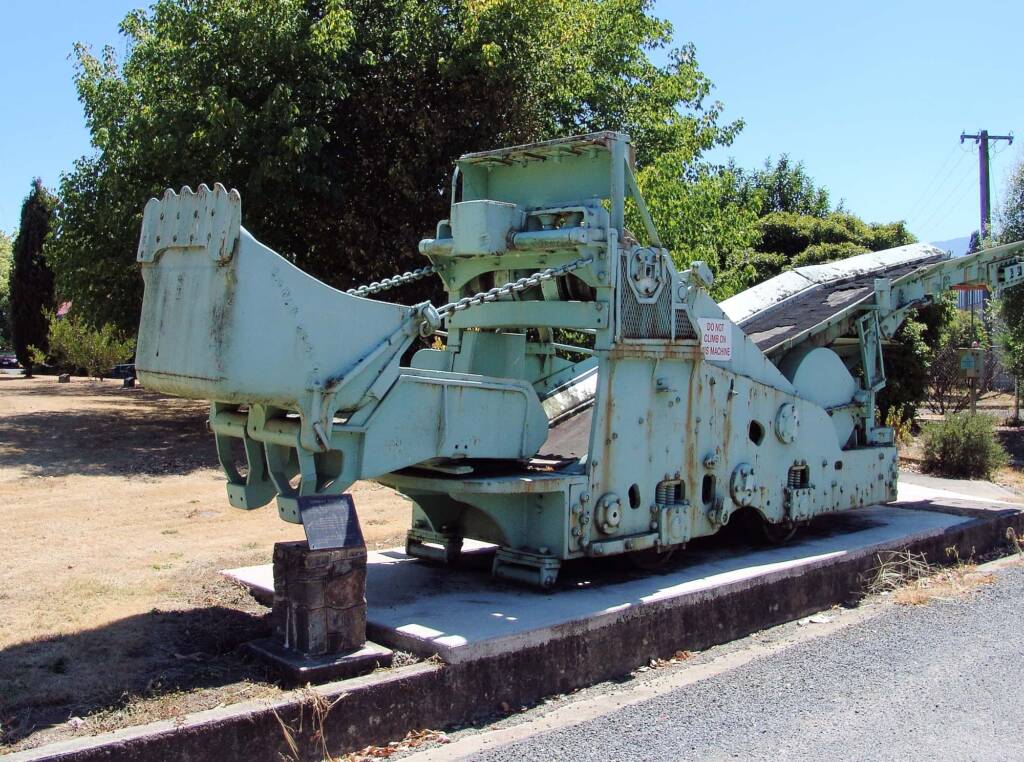
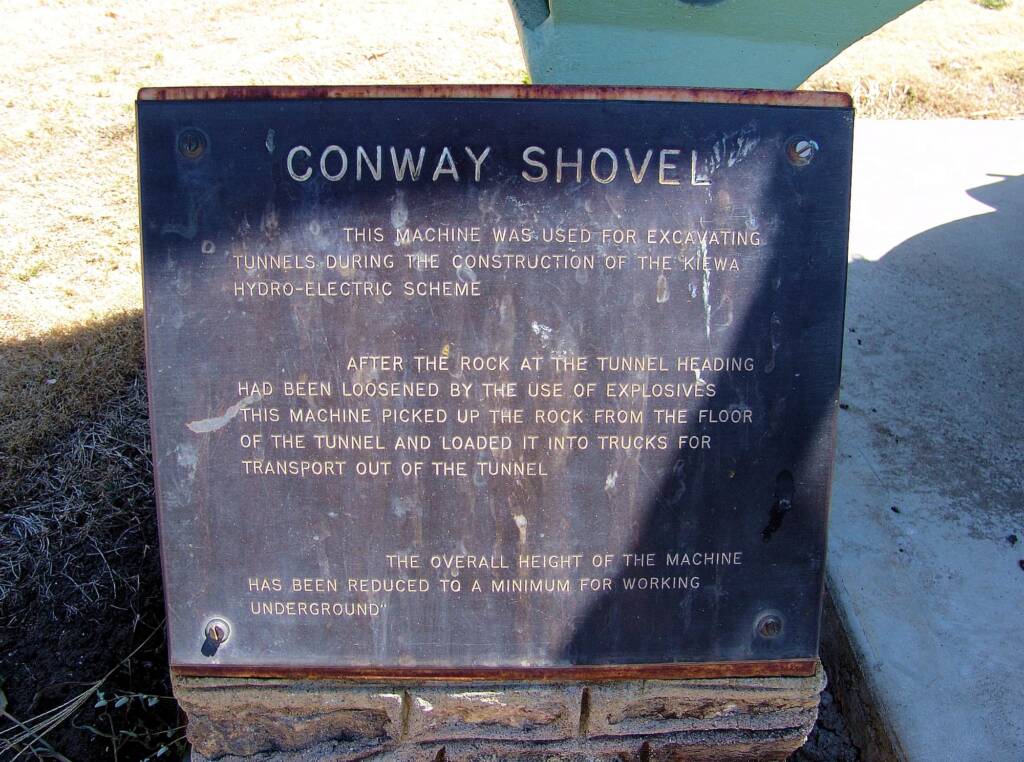
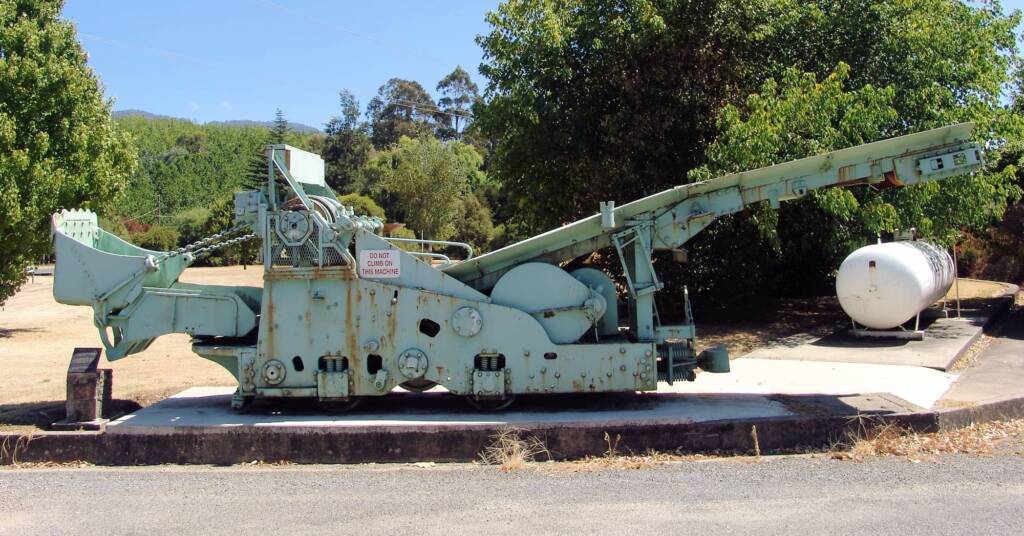
Calyx Drill Cores
Located in front of the Alpine Discovery Centre are sample columns of rock cores that were removed from the site of the Rocky Valley Spillway Shaft at the commencement of its construction by using a Calyx Drilling Machine.
The samples are composed of granodiorite which is the predominant rock in the area.
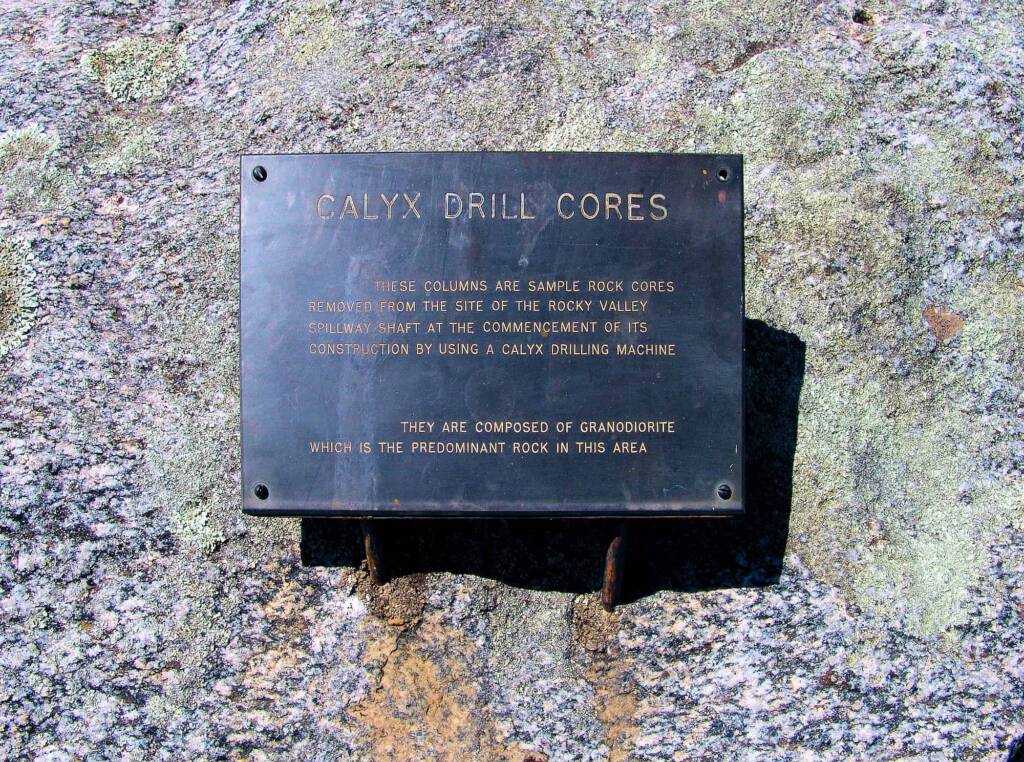
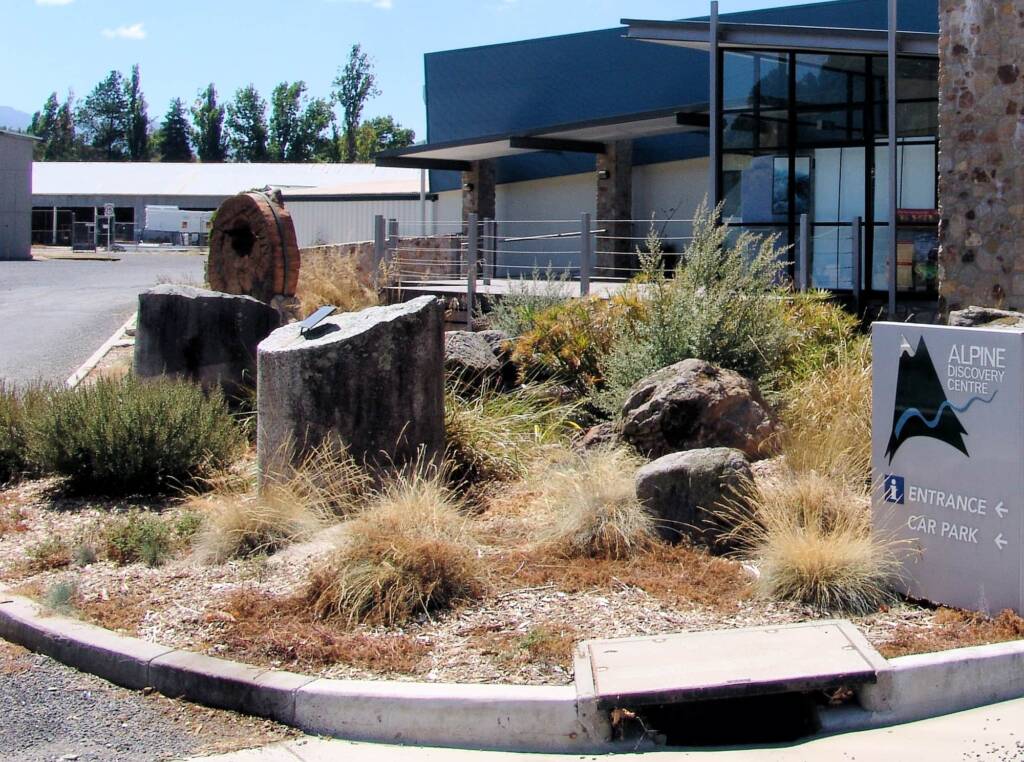
Slice of Time
In front of the visitor centre is an example of flora to be found in the area. The slice of tree mounted on display is from a Manna Gum (Eucalyptus viminalis). The tree was found fallen in the National Park after the 2003 fires. It was estimated to be approximately 250 years old and the section on display was taken 10 metres up the trunk from the base of the tree.
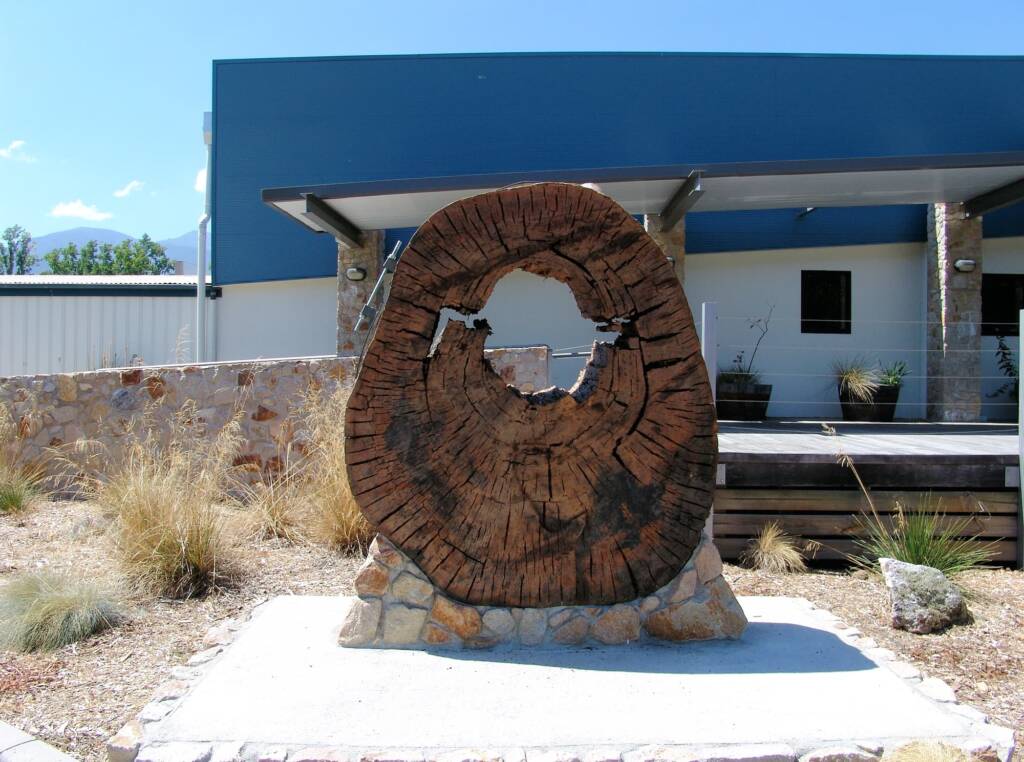
World’s Longest Gum Leaf
This was once an annual event that started from Boxing Day to the end of January, with the framed winner put on display. The 2003 inaugural framed winner is on display in the Mount Beauty Visitor Information Centre (formerly the Alpine Discovery Centre) measuring a whopping 82.5 cm, measured along the stem (just under 2 ft 8 in) and this did not include the end of the gum leaf which had been broken off!
The leaf was found by the Ryder Family in the Mountain Creek area inside the fire control line zone doing GPS readings for the January ’03 Fires.
It is thought to be from a Victorian Bluegum (Eucalyptus bicostata).
The ‘search’ itself was designed to provide fun and free entertainment for kids and adults during their visit to Mountt Beauty over the summer holidays and did not require any special skill other than the will to have a walk in the bush and a pair of eyes.
Contact the Mount Beauty Visitor Information Centre for details of the next event.
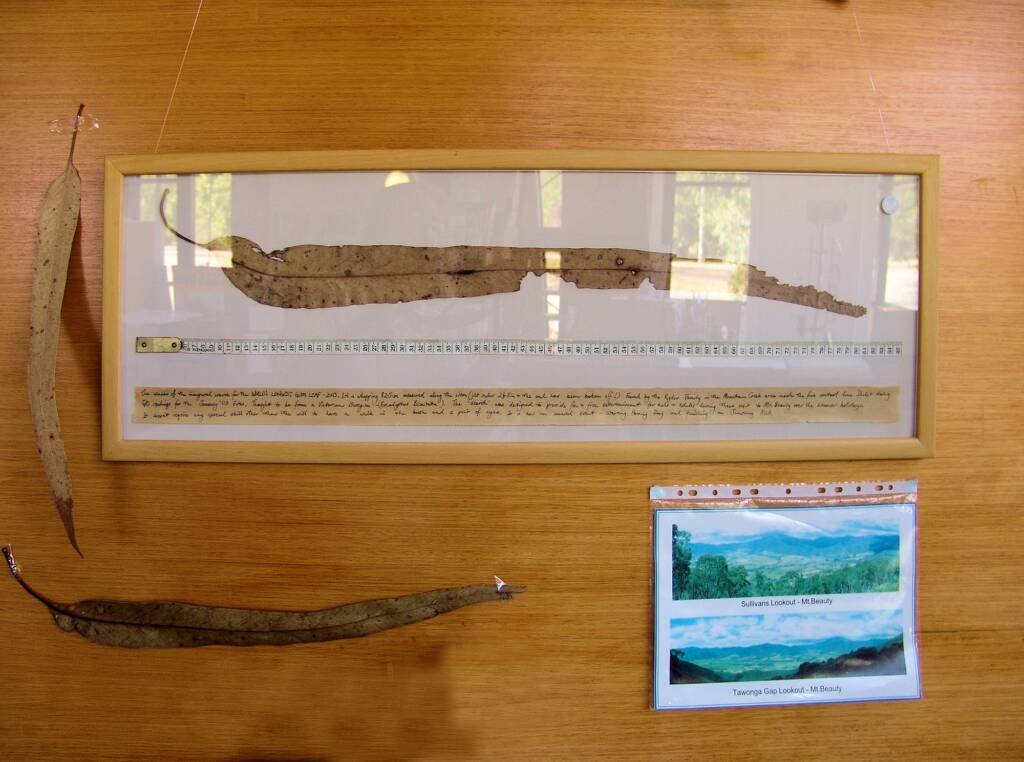
Walks and Drives
Mount Beauty and the surrounding Bogong High Plains have some of Australia’s best walks and drives. For those just wanting to do it on foot, you can choose from just a village stroll or a wilderness hike. There are a number of walks to be enjoyed and experienced at Mount Beauty including Eskdale Spur, Mount Beauty VGorge Walk, Mount Beauty Pondage Trail, Mount Beauty to Tawonga Trail, and Survey Track/Pole Track. Contact the Mount Beauty Visitor Information Centre and website for more information.
Festivals & Events
There are a number of festival, events and activites for Mount Beauty and surrounds. You can search for festival and events information on the Visit Mount Beauty website.
Victorian Alpine Region > Beechworth | Benalla | Chiltern | Corryong | Eildon | Falls Creek | Glenrowan | Harrietville | King Valley & Milawa | Kinglake | Lake Mountain | Mansfield | Mount Beauty | Mount Buffalo | Mount Buller | Mount Stirling | Mountain Creek | Rutherglen | Tallangatta | Yackandandah | Yea
Great Alpine Road > Alpine National Park | Bairnsdale | Bright | Dinner Plain | Harrietville | Lakes Entrance | Mount Hotham | Myrtleford | Omeo | Oxley | Porepunkah | Wangaratta ◦ Other regions: Victoria’s High Country | NSW Snowy Mountain Region
Other towns, villages and localities in the Great Alpine Road include: Bruthen • Ensay • Eurobin Falls • Everton • Ovens • Swifts Creek • Tarrawingee
Footnote & References
- Mount Beauty Visitor Information Centre, https://www.visitmountbeauty.com.au/visitor-information-centre/
Mount BeautyAttractions & History
VictoriaAlpine National Park Bright Dinner Plain Falls Creek Glenrowan Great Alpine Road Great Ocean Road Kyabram Mount Beauty Mount Buffalo Mount Hotham Mountain Creek Phillip Island Sullivans Lookout Victorian Alpine Region Victoria’s High Country Wilsons Promontory National Park
